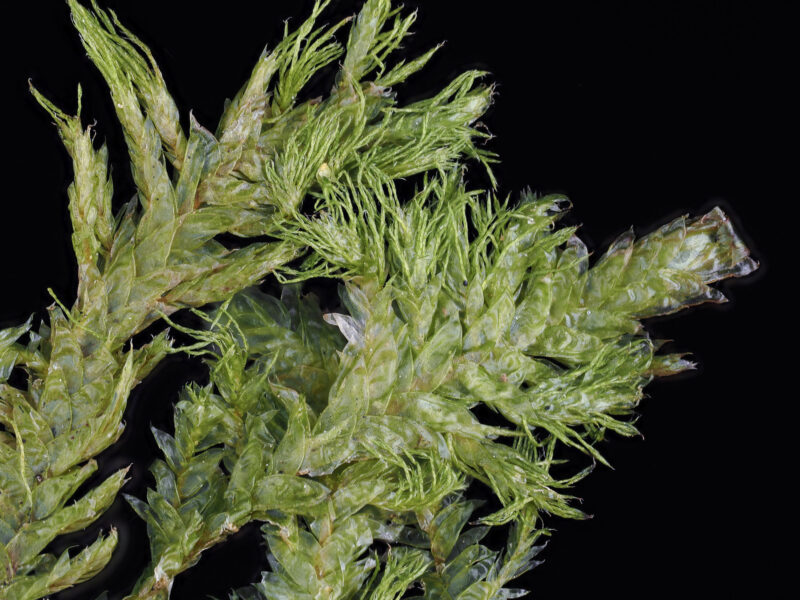Identification notes
Like other members of the genus, N. pumila has the shoots strongly flattened in one plane and leaves with a barely noticeable nerve. Initially, you might think of a Plagiothecium species, but the branching pattern avoids confusion: very few side branches in Plagiothecium, many side branches in N. pumila. The same distinction helps to separate this species from Pseudotaxiphyllum elegans, which, in addition, usually has abundant propaguliferous shoots, nestled in bunches in leaf axils. These should not be confusable with the thread-like branches that sometimes occur in N. pumila (and N. complanata), which look quite different. Furthermore, while Plagiothecium and Pseudotaxiphyllum are common on soil, N. pumila is almost exclusively a plant of tree trunks and sometimes twigs and branches.
So how does it compare with its congeners? Look closely and you will see that the leaves are noticeably undulate, which immediately separates it from N. complanata. Usually, the leaf tip of N. pumila is acute, rather than obtuse and apiculate as in N. complanata. N. crispa, which only occasionally grows on trees, also has undulate leaves but is a much bigger plant than N. pumila (Leaves about 2.5mm long, whereas those of N. pumila are less than 2mm.). It too has an obtuse and apiculate leaf tip.
Homalia trichomanoides is more likely to be confused with N. complanata than with N. pumila, but deserves a quick mention: peel off some leaves from the stem of this species and you will see that they have a nerve, which all of our Neckeras lack.
Read the Field Guide account
















